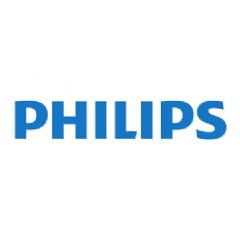Predictive analytics reducing patient transfers to the ICU
Interview with Diane Bartos, Director of Critical Care at Saratoga Hospital, U.S.
By leveraging the Philips IntelliVue Guardian Solution and Early Warning Scoring (EWS), clinicians were able to identify and detect problematic changes in patients’ vital sign information hours before a potential adverse event could occur. -Diane Bartos, Director of Critical Care, Saratoga Hospital.
The shift to value-based care is impacting hospitals in the U.S., adding pressure to deliver quality care and achieve the best clinical outcomes while reducing costs. In New York State alone, more than 40 percent of adults suffer from a chronic disease, which is responsible for 23 percent of all hospitalizations in the state [1]. The high number of hospitalizations can make for a hectic, overcrowded general ward. In these scenarios, it’s often difficult for caregivers to determine which patients are at the greatest risk of an unexpected serious adverse event like cardiac arrest or even death.
The challenge to identify patients who were deterioratingClinicians at Saratoga Hospital would take patients’ vital signs every four hours, and information was then manually logged into the electronic medical record (EMR) to be further assessed by nurses. This spot-checking made it difficult for nurses to identify patients who were deteriorating. In an effort to intervene quickly to minimize preventable adverse events at its hospital, Saratoga Hospital teamed with Philips to implement a solution to reduce patient codes and transfers to the intensive care unit (ICU).
Reducing patient transfers to the ICU by 63 percentSince implementing Philips’ patient monitoring solution in 2015, Saratoga Hospital has reduced patient transfers to the ICU by 63 percent and eliminated patient codes within its 20-bed orthopedic unit, which dropped from three or four codes per year to zero. Not only did the solution enhance workflow, but it also empowered nurses to make more confident care decisions and intervene quicker.
“By leveraging the Philips IntelliVue Guardian Solution and Early Warning Scoring (EWS), clinicians were able to identify and detect problematic changes in patients’ vital sign information hours before a potential adverse event could occur. This gave Saratoga’s clinicians time to intervene before a patient deteriorated and required transfer back to the ICU,” said Diane Bartos, Director of Critical Care, Saratoga Hospital.
Diane Bartos, Director of Critical Care at Saratoga Hospital recently spoke with Bill Siwicki, Managing Editor of Healthcare IT News to discuss how Saratoga Hospital is leveraging technology to help reduce patient transfers to the ICU. Read the full interview here.
[1] https://www.health.ny.gov/diseases/chronic/
( Press Release Image: https://photos.webwire.com/prmedia/6/230755/230755-1.png )
WebWireID230755
This news content was configured by WebWire editorial staff. Linking is permitted.
News Release Distribution and Press Release Distribution Services Provided by WebWire.
